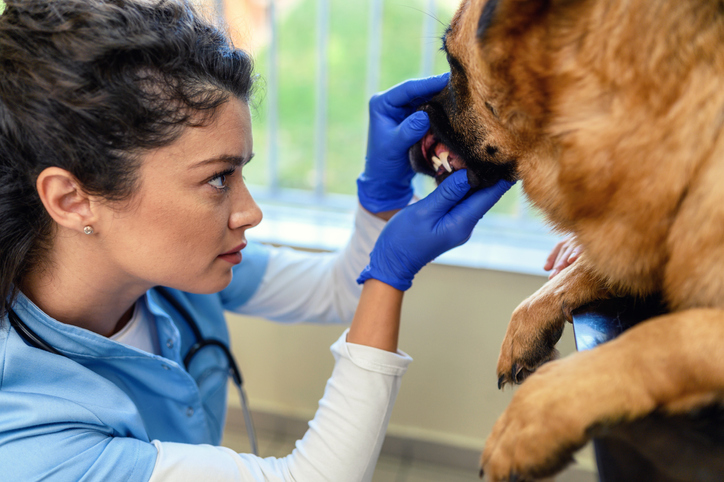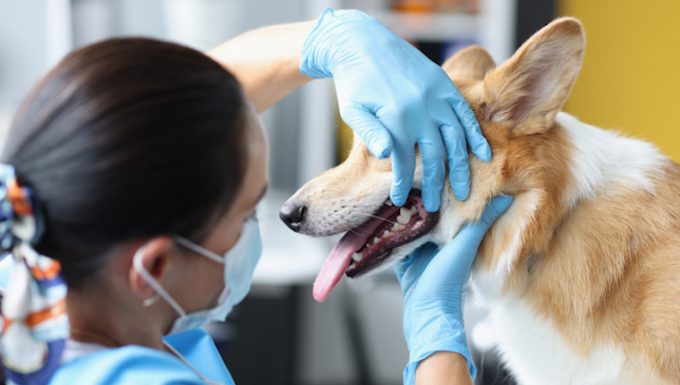Gingiva squamous cell carcinoma in dogs is a specific type of mouth cancer. The condition is actually the most common form of mouth cancer in dogs.
Generally, the condition needs to be treated as quickly as possible. This is so the condition does not spread to the rest of the body.
Technically, squamous cell carcinoma can also affect other parts of a dog’s body, particularly in the nail beds of the toes. You can read more about that condition in general here.
If you see the signs of gingiva squamous cell carcinoma in your dog, then get to a veterinarian for a proper diagnosis and treatment.
Here’s what you should know about the symptoms, causes, and treatments for the condition.
Symptoms of Gingiva Squamous Cell Carcinoma in Dogs
The condition produces a range of symptoms. For instance, some of the most common symptoms include:
- Drooling
- Weight loss
- Bad breath
- Difficulty eating
- Blood around the mouth
- Loose teeth
- Swollen jaw
- Growths in the mouth
- Coughing
Causes of Gingiva Squamous Cell Carcinoma in Dogs

The cause of the condition is technically unknown. This is called being idiopathic. However, the following factors are suspected to be contributory causes:
- Chemical exposure
- Radiation
- Infections
Additionally, the following breeds seem to develop the condition more than usual:
- Beagle
- Bull Terrier
- Dalmatian
- Basset Hound
- Poodle
- Schnauzer
- Kerry Blue Terrier
Treatments for Gingiva Squamous Cell Carcinoma in Dogs
Firstly, your vet will ask about your dog’s symptoms. Secondly, your vet will ask about your dog’s full medical history. This will include breed-specific problems.
Thirdly, your vet will carry out a full physical examination. Your vet will pay special attention to your dog’s mouth. Additionally, blood and urine tests will be taken. Ultimately, your vet will need to take a biopsy of any growths to confirm the condition.
Generally, treatment depends on the severity of the condition. For example, a process called cryosurgery can be used to freeze and remove any small tumors. However, larger tumors can require more intensive surgery and sometimes the removal of part of the jaw.
Additionally, some cases will require a combination of radiation and chemotherapy. Also, a process called photodynamic therapy can be attempted. This process uses surgical lasers to target the growths.
Generally, while your dog recovers, you will need to provide them with a quiet and calm home environment. Also, your dog might need to modify their diet to include softer foods. Your vet can help formulate a safe and nutritious diet for your dog.
Have you ever cared for a dog who suffered from this condition? How did your vet help your dog recover? Let us know in the comments section below.




